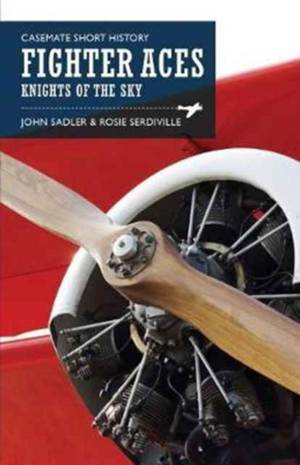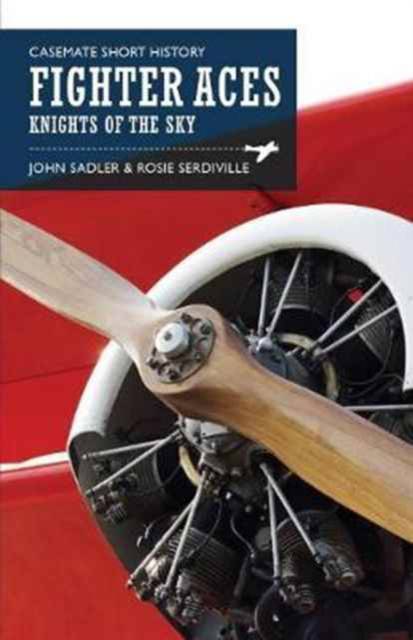
- Retrait gratuit dans votre magasin Club
- 7.000.000 titres dans notre catalogue
- Payer en toute sécurité
- Toujours un magasin près de chez vous
- Retrait gratuit dans votre magasin Club
- 7.000.0000 titres dans notre catalogue
- Payer en toute sécurité
- Toujours un magasin près de chez vous
Description
The Casemate Short History Series presents readable and entertaining introductions to military history topics. Just over a decade after the first successful powered flight, fearless pioneers were flying over the battlefields of France in flimsy biplanes. As more aircraft took to the skies, their pilots began to develop tactics to take down enemy aviators. Though the infantry in their muddy trenches might see aerial combat as glorious and chivalric, the reality for these 'Knights of the Sky' was very different and undeniably deadly: new Royal Flying Corps subalterns in 1917 had a life expectancy of 11 days. In 1915 the term 'ace' was coined to denote a pilot adept at downing enemy aircraft, and top aces like the Red Baron, René Fonck and Billy Bishop became household names. The idea of the ace continued after the 1918 Armistice, but as the size of air forces increased, the prominence of the ace diminished. But still, the pilots who swirled and danced in Hurricanes and Spitfires over southern England in 1940 were, and remain, feted as 'the Few' who stood between Britain and invasion. Flying aircraft advanced beyond the wildest dreams of Great War pilots, the 'top' fighter aces of World War II would accrue hundreds of kills, though their life expectancy was still measured in weeks, not years.
World War II cemented the vital role of air power, and postwar innovation gave fighter pilots jet-powered fighters, enabling them to pursue duels over huge areas above modern battlefields. This entertaining introduction explores the history and cult of the fighter ace from the first pilots through late 20th century conflicts, which leads to discussion of whether the era of the fighter ace is at an end.
World War II cemented the vital role of air power, and postwar innovation gave fighter pilots jet-powered fighters, enabling them to pursue duels over huge areas above modern battlefields. This entertaining introduction explores the history and cult of the fighter ace from the first pilots through late 20th century conflicts, which leads to discussion of whether the era of the fighter ace is at an end.
Spécifications
Parties prenantes
- Auteur(s) :
- Editeur:
Contenu
- Nombre de pages :
- 160
- Langue:
- Anglais
- Collection :
Caractéristiques
- EAN:
- 9781612004822
- Date de parution :
- 10-07-17
- Format:
- Livre broché
- Format numérique:
- Trade paperback (VS)
- Dimensions :
- 124 mm x 196 mm
- Poids :
- 204 g

Les avis
Nous publions uniquement les avis qui respectent les conditions requises. Consultez nos conditions pour les avis.






